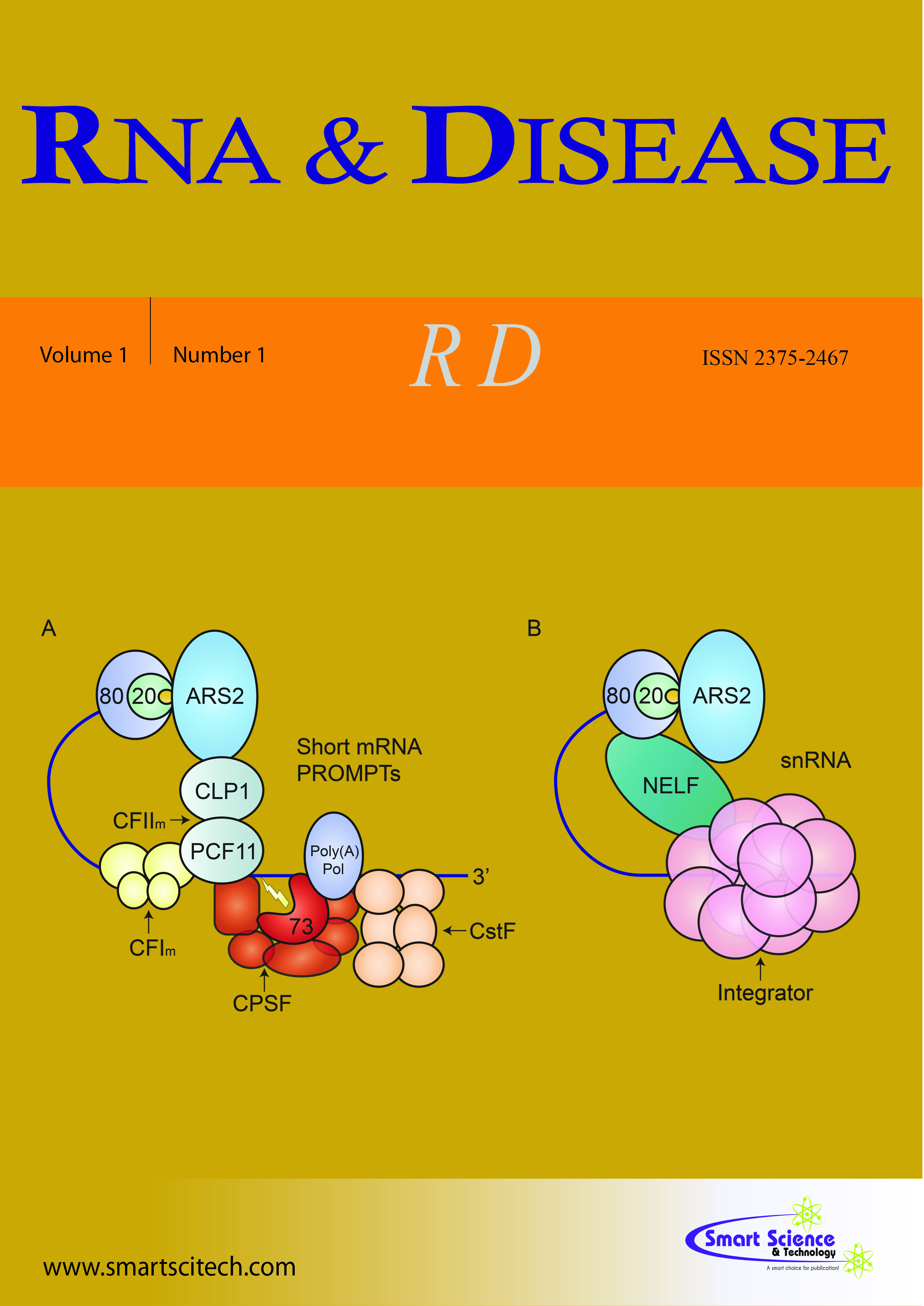The anti-melanoma activity and oncogenic targets of hsa-miR-15a-5p
DOI: 10.14800/rd.1450
Abstract
miRNAs regulate gene expression post-transcriptionally and pre-translationally. Through gene regulation, several miRNAs have been found to play a significant role in various diseases. Each miRNA has multiple targets and is able to have a potent, albeit complex, effect on the cells. Specifically, miRNA-15a has been found to significantly reduce cancer cell survival and aggressiveness through multiple mechanisms across several cancer types. Our research found that miRNA-15a was able to decrease melanoma cell viability in-vitro and in-vivo. We have also found that miRNA-15a caused cell cycle arrest at the G0/G1 phase. Moreover, miRNA-15a was found to decrease the invasiveness of melanoma cells. CDCA4 was also discovered as a novel bona-fide target of miRNA-15a. The following oncogenic mRNAs are verified targets of miRNA-15a: CDCA4, BCL2L2, YAP1, AKT-3, Cyclin E1, and ?-Synuclein. In the future we hope to better understand which miRNAs will be effective in different transcriptome and genome environments. Efforts such as the NIH Center for Cancer Genomics’ ‘The Cancer Genome Atlas,’ ‘Cancer Target and Driver Discovery Network,’ and the ‘Human Cancer Models Initiatives’ among others, will help us characterize the specific tumor environments in which different miRNAs are able to reduce cancer proliferation and aggression. This information will be enhanced by improving the delivery of miRNA by inducing its expression in-situ with dCas9 conjugated to activation domains.












